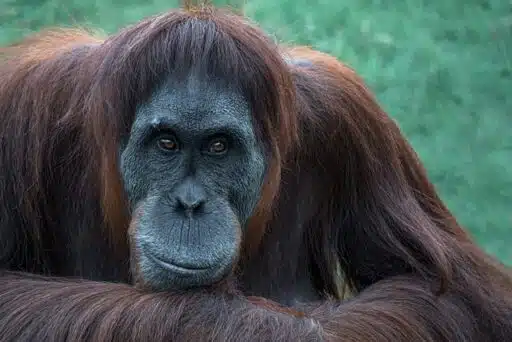Our current life style is highly unsustainable and is causing numerous species to go extinct. We’ve listed the most endangered animals due to human activity.
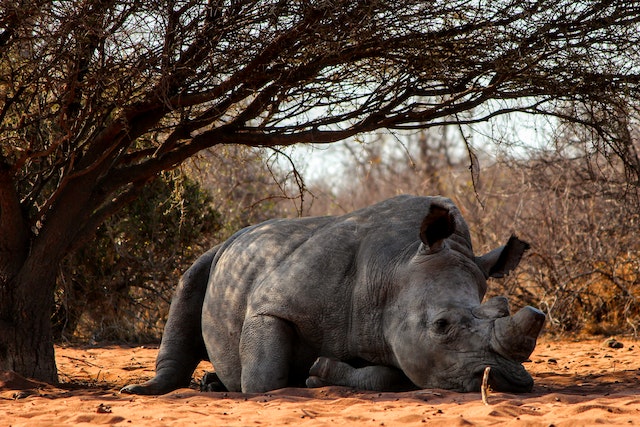
Human population growth is damaging a variety of environments. For example, the agriculture business is a significant contributor to wildlife loss because it causes the transformation of ecosystems.
A species is considered endangered when its population declines by 50-70% or when it has fewer than 250 adults. This decline is often caused by dwindling environmental conditions.
The International Union for the Conservation of Nature (IUCN) maintains the Red List, which includes 41,415 species, of which 16,306 are classified as endangered or threatened with extinction. This number has increased from the previous year’s total of 16,118. The Red List covers both endangered plant and animal species.
Here, we will discuss the 18 most endangered animals due to human activity species in the world and how we can change our habits in order to help save them.
#1 Orangutans
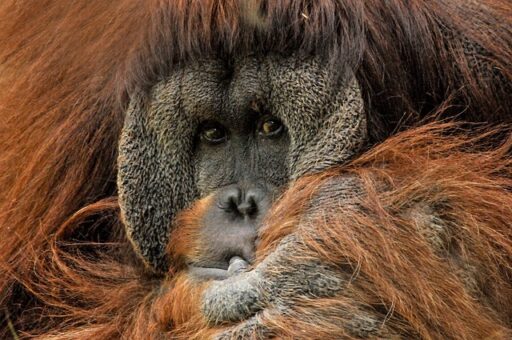
Orangutan populations have significantly decreased over the years. From an estimated 230,000 about 100 years ago, to Bornean Orangutans numbering around 104,700 and Sumatran Orangutans reaching a critically endangered state with only 7,500 individuals. The destruction of their natural habitats, particularly in Sumatra and Borneo, due to deforestation for palm oil plantations, is the main cause of orangutan extinction.
Orangutans Habitat:
Orangutans mainly live in Malaysia and Indonesia.
#2 Asian Elephants
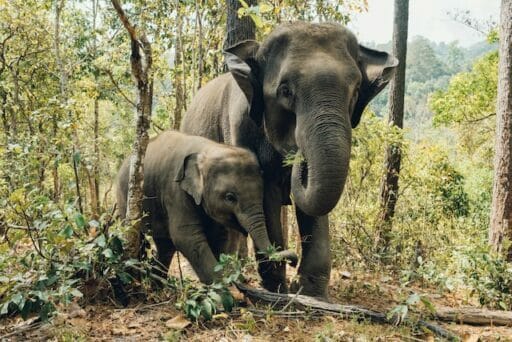
Asian elephants have been classified as endangered by the IUCN. Their population has decreased by 50% in the past 75 years, leaving only 20,000 to 40,000 individuals in the wild.
Trading Asian elephants and their parts commercially is prohibited due to their protected status under the Endangered Species Act (ESA) and the Convention on International Trade in Endangered Species of Wild Fauna and Flora (CITES).
Asian Elephants Habitat:
They are mostly present in Thailand, India, and Sri Lanka.
#3 Javan Rhinoceros
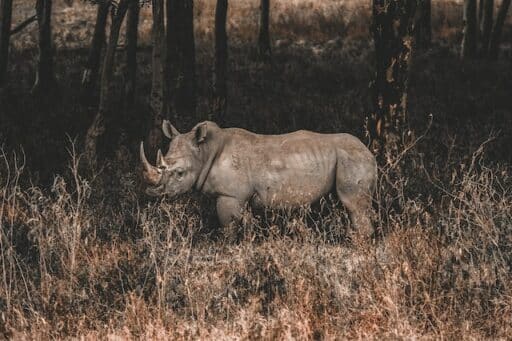
According to current updates, only 67 Javan rhinos exist in the world – making them one of the planet’s most endangered large mammal species.
The three Rhinoceros subspecies are highly endangered, i.e., Black, Javan, and Sumatran rhino species. On the northernmost point of the Indonesian island of Java, just one single national park is home to the last small population of Javan Rhinos. Vietnam already declared the subspecies of the Javan rhino extinct in the year 2011.
International Rhino Foundation works locally in Indonesia with The Rhino Foundation of Indonesia alongside the park’s management to protect the Javan Rhinos, looking for ways to expand the species’ habitat.
Rhino Habitat
The habitats of rhinos include grasslands, tropical forests, deserts, and shrublands.
#4 Vaquita
The Vaquita, a small harbor dolphin, has a limited range in Mexico’s northern Gulf of California. With a length of 4-5 feet and a weight of no more than 100 pounds, it is the smallest known cetacean.
Vaquita Habitat
The species known as the Vaquita, or “small cow,” is only exists in the northern part of the Gulf of California.
#5 Atlantic Bluefin Tuna
Overfishing and illegal fishing have caused a significant decline in Bluefin Tuna populations. The demand for this fish in high-end sushi restaurants is a major driver of population decline.
The critically endangered bluefin tuna now constitutes less than 1% of the global supply. Slow progress in tuna management and conservation has led to concerns about the potential increase in other species, such as squid, if bluefin tuna goes extinct in the Mediterranean Sea.
Atlantic Bluefin Tuna Habitat
They are typically present in the Mediterranean Sea of the North Atlantic Ocean, and here and there from Ecuador to Norway, and from the Black sea to Mexico.
#6 Mountain Gorilla
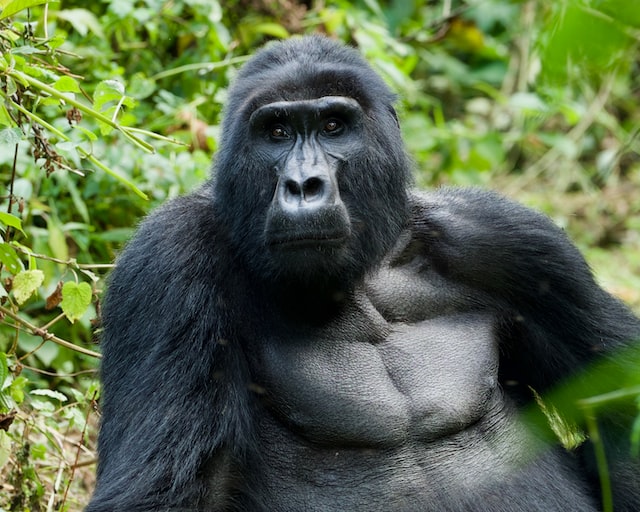
Mountain gorillas face various threats, including unrestricted hunting, diseases, habitat degradation, and human impact. Their population decline has led to their classification as endangered.
Mountain Gorilla Habitat
These commonly reside in the Virunga Mountains around Uganda, the Democratic Republic of Congo, the Central African Republic & Congo Brazzaville.
#7 Leatherback Turtles
Leatherback turtles are known for their unique shell, resembling leather rather than the typical turtle shell. These turtles, the largest species of turtle, migrate between the Atlantic and Pacific Oceans.
Intensive egg harvesting and entanglement in fishing gear during hunting are the leading causes of their population decline.
Leatherback Turtles Habitat
These are largely found in Malaysia (Tioman Island), Australia (Heron Island), Costa Rica (Hawaii. Laniakea Beach) & Indonesia Gili Islands.
#8 Tiger
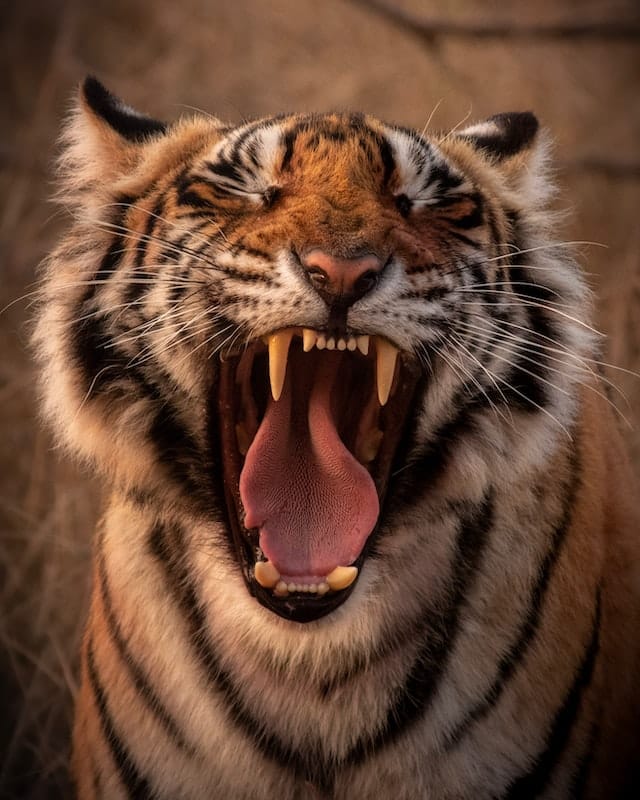
Presently, the tiger is on the International Union for Conservation of Nature’s (IUCN) Red List of Threatened Species – labelled as endangered. Allegedly only 3,500 tigers still exist in the wild.
Tiger Habitat
Tigers usually live in forests and grasslands. They prefer to live in areas with things like forests or grasslands for cover, water, and enough land to hunt their prey.
#9 Irrawaddy Dolphins
The Irrawaddy dolphin is a euryhaline oceanic dolphin, which means it can swim in both saltwater and freshwater. Unlike most dolphins, they do not have a distinctive beak and sleek head. Instead they have a blunt nose and a broad, round forehead.
Irrawaddy Dolphins Habitat
Reportedly, only about 80 Irrawaddy dolphins remain in the Mekong between Kratie and the Lao border. The best site to see them is in Kampi, about 15 kilometers north of Kratie on the way to Sambor in Southeast Asia.
#10 Snow Leopards
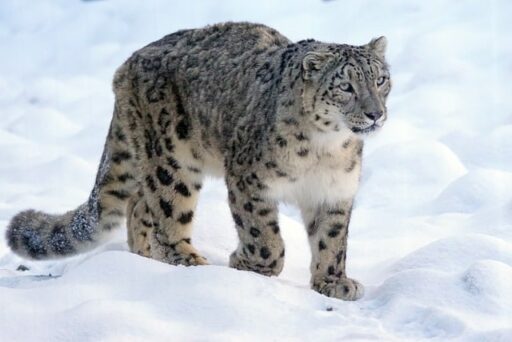
Their population consists of between 4,080 and 6,590 individuals in the wild, although biologists are unsure. They reside in mountainous areas of central and Southern Asia.
Snow Leopards Habitat
High alpine regions in the Himalayas, usually above 18,000 feet above the ground, is their typical habitat. They have now been found in 12 countries, including China, Bhutan, Nepal, India, Pakistan, Russia, and Mongolia.
#11 Riverine Rabbits
The darker brown stripe that runs down the bottom jaw and the white circle around each eye give this rabbit its earthy look. Its coloring helps it blend in. Compared to other rabbit species, its back feet are wider than its front feet.
According to the IUCN, these rabbits are critically endangered. Riverine rabbits are present in various parts of Africa and their species has become endangered since 2003.
Riverine Rabbits Habitat
The riparian region —the space between the ground and a river— is where the Riverine Rabbit prefers to nest.
#12 African Penguin
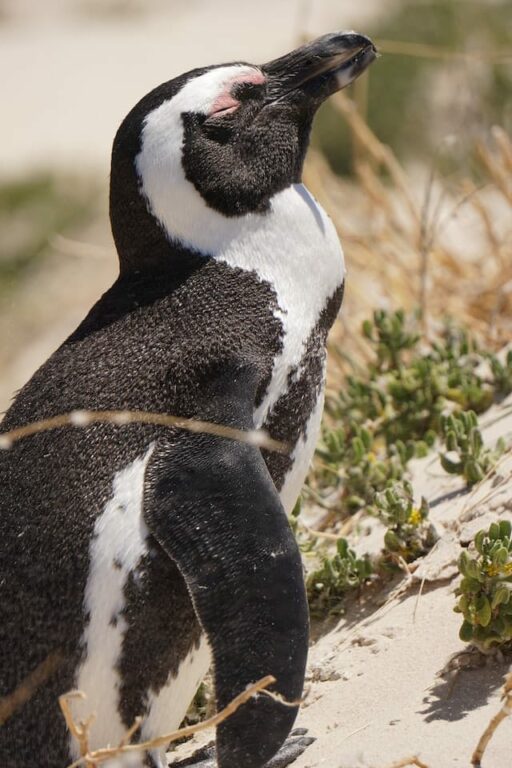
African penguins are flightless birds well-adapted to their aquatic environment, noticeable for their black facial mask and pink coloring around their eyes. The number of African penguins in the wild has decreased by 95% since pre-industrial times.
Shipwrecks, oil spills, and illegal exploitation of their environment by ships have contributed to their decline.
African Penguin Habitat
African penguins can be found on offshore islands and in coastal locations. Their natural habitats are mountainous, rocky places with natural vegetation or flat, sandy areas.
#13 Black Rhino
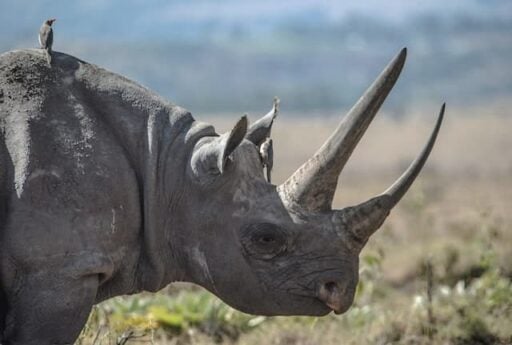
Once the most populous rhino species, black rhinos have experienced severe poaching and habitat loss due to agricultural expansion and human activities. They are now critically endangered, with their habitats frequently being lost or fragmented as a result.
The IUCN has designated them as critically endangered since 1996.
Black Rhino Habitat
The grasslands and tropical bushlands of Africa are the black rhino’s primary habitats.
#14 Lowland Gorilla
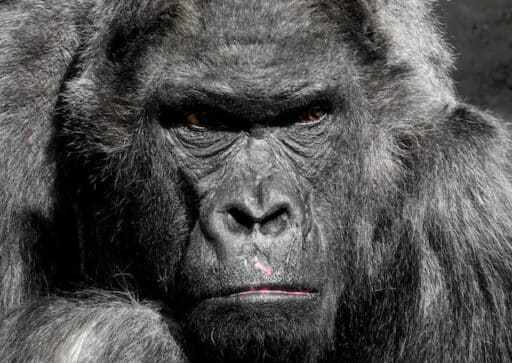
Gorillas, which share 98.3% of our genetic code, are threatened by commercial trafficking in bushmeat in West and Central Africa. The demand for ape meat in urban areas has become the main cause of the lowland gorilla’s endangerment.
Lowland Gorilla Habitat
The tropical woods of Cameroon, Gabon, Congo, and Equatorial Guinea are home to lowland gorillas.
#15 Chimpanzee
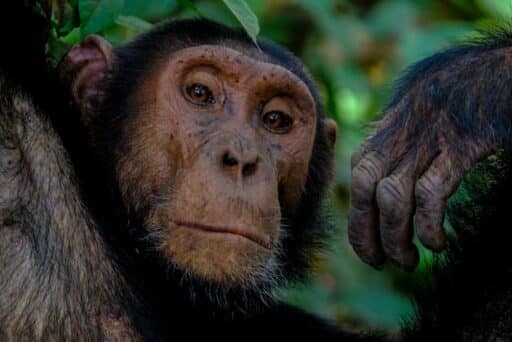
Chimpanzees have long been subjects of scientific interest and human experimentation. In the mid-20th century, they were used for early space research and testing, which often caused physical and mental suffering, bringing them to their critically endangered state.
Chimpanzee Habitat
From eastern to western Africa, they are spotted in woods and grasslands in addition to the tropical rainforests where they typically reside.
#16 Ethiopian Wolf
Ethiopian wolves face extinction due to high-altitude subsistence agriculture and overgrazing by domestic animals. Political unrest in the 1990s led to the destruction of a significant population in the Bale Mountains.
As a result, in 1994, the Ethiopian wolf’s status became critically endangered.
Ethiopian Wolf Habitat
The range of the Ethiopian wolf is extremely constrained. Only six to seven mountain ranges in Ethiopia contain it, such as Southeast Ethiopia’s Arssi and Bale Mountains.
#17 Hooded Vulture
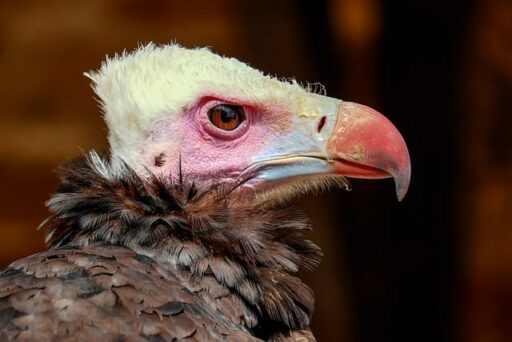
The widespread use of medications like diclofenac, once frequently used as a cattle anti-inflammatory drug, is thought to be a significant role in the decline of vulture populations.
Because of poisoning, use in traditional medicines, hunting, persecution, and habitat loss and degradation, this species’ population is currently declining at an exceedingly rapid rate.
Hooded Vulture Habitat
This species resides in riparian habitats, woodlands, agricultural areas, deserts, and urban settings, frequently coexisting closely with people.
#18 Saola
Only three photos of the Saola in the wild have ever been taken since its discovery in 1992. This species’ population is declining at an unusually rapid rate due to poisoning, use in traditional medicines, hunting, electrification, persecution, and loss of habitats.
Saola Habitat
In eastern Southeast Asia, it lives in moist evergreen or deciduous forests, preferring river valleys. Usually they prefer living in grasslands and woods.
Ways to Save the Most Endangered Animals Due to Human Activity
As we can see most animals are endangered for reasons to due with human activity. Our current lifestyle is proving to highly unsustainable. Here are some habits we must practice to save these 18 most endangered animals due to human activity before it is too late.

Avoid Using Harmful Pesticides
Some pesticides and herbicides may effectively reduce weeds, but they can have long-term negative impacts on local species. Aside from the possible harm to native flora, the toxins in these chemicals can penetrate the soil and remain there for a long time.
Once in the soil, these toxins can go up the food chain and harm smaller species and then the larger predatory animals that consume them. Reducing or eliminating their usage can help conserve endangered species in the area.
Plantation To Support The Natural Ecosystem
Native plant plantation provides various benefits to local species besides food and shelter. Therefore, by helping with the replenishment of native flora in your region, you will be offering an important service to endangered creatures in need at the moment.
Planting native plants that attract pollinators such as wasps and other insects, an essential component of a healthy environment, could help counter this.
Planting native species can also help counter the harm caused by invasive and harmful species, which tend to infiltrate and destroy local plant and animal populations.
Wise Consumption Of Water
Clean water is an essential resource not just for humans but also for wildlife. The lack of availability to clean water can generate a wide range of problems for wildlife. Reducing the quantity of water our family and people in our surroundings consume can aid in conserving clean water for animals.
Simple actions like avoiding leaving the water running while brushing your teeth or using showers instead of tubs can help conserve water for endangered species. Don’t flush chemicals through the toilet, either. Instead make sure to dispose of them properly.
Reduction in Personal Pollution
This point refers to our individual human activities we can alter to assist endangered animals. You may also contribute by lowering your carbon footprint. When possible, walk, cycle, or choose public transportation instead of driving a private vehicle. If feasible, carpool to work. Eat locally sourced food. These minor efforts can make the world a safer place for endangered species.
Unnecessary Invasion of Animal Space
We should keep a safe distance from wild animals. Respect the space by not approaching and taking them out of their natural habitat. If young animals are found somewhere, like in the spring season, we should not handle them alone. Mothers frequently leave their new offspring for periods to feed themselves.
Although the children appear alone, the mother very definitely returns within 24 hours, and treating the infants during this duration endangers them. Contact a local qualified animal rescuer if you encounter an injured wild animal.
Conclusion
We have discussed the 18 most endangered animals due to human activity and threats wildlife faces in this article. When a species becomes extinct, the world around us begins to collapse.
The consequences are far-reaching, not only for those areas and species – but for all of us. There are practical consequences, such as adverse impacts on agricultural pollination and water cleaning to the whole world.
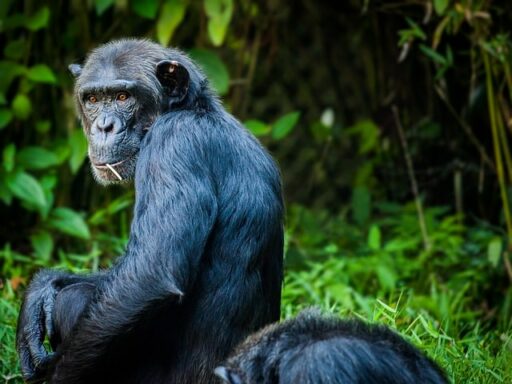
The widespread loss of habitat is perhaps the most serious hazard to many species. Scientists believe that protecting the habitats where endangered animals reside is the greatest approach to protect them. Wildlife needs someplace to eat, sleep, and nurture their babies – just like we do.
Thank you for reading this article! To educate yourself on more endangered species you can read our article on the 21 Most Endangered Primates.
Join our Forum for free today!


